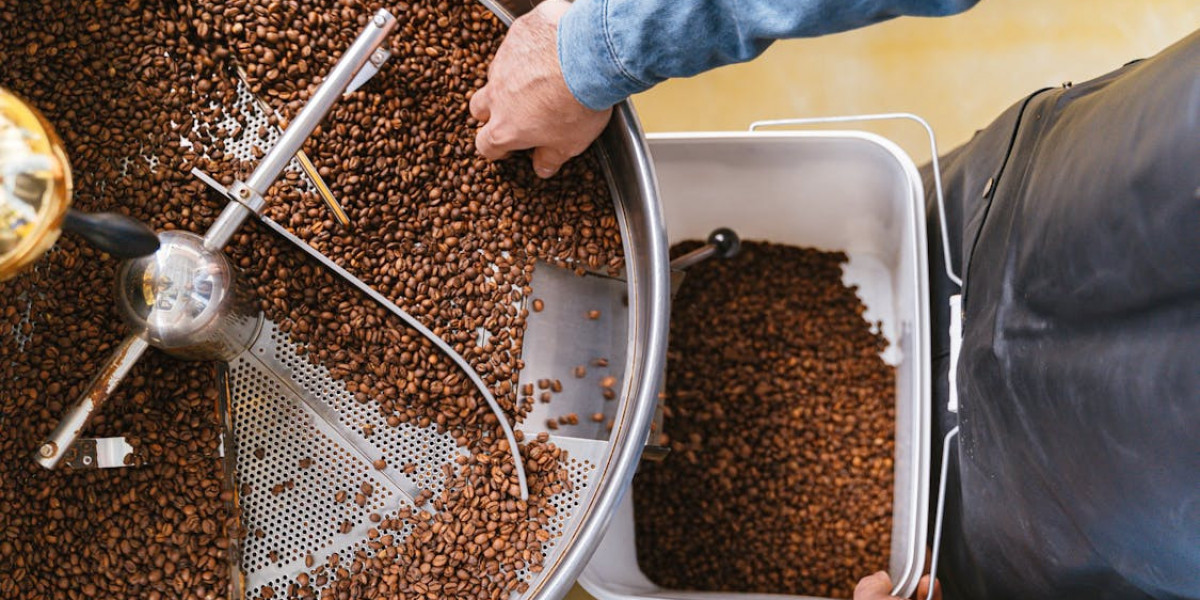What is Single Origin Coffee?
Single origin coffee refers to coffee that is sourced from a single location, whether it's a specific farm, region, or country. Unlike coffee blends, which mix beans from various places, single origin coffee highlights the distinct characteristics of its place of origin. These coffees are often celebrated for their unique flavor profiles, which are influenced by factors like climate, soil, and altitude.
How Single Origin Coffee Differs from Blends
While coffee blends offer a balanced taste by mixing beans from different sources, single origin coffee provides a more specific, unaltered taste experience. It allows coffee lovers to explore and appreciate the natural flavors unique to different regions.
Blends are typically crafted to create a consistent flavor profile, which can be great for those who prefer predictability in their coffee. However, single origin coffee varies from harvest to harvest, offering a diverse and exciting journey for coffee enthusiasts.
The Unique Characteristics of Single Origin Coffee
Each single origin coffee carries distinct tasting notes based on where it’s grown. Here are a few examples:
Ethiopian Coffee: Known for its bright acidity, floral aroma, and fruity notes, Ethiopian coffee often has hints of berries, jasmine, and citrus.
Colombian Coffee: Balanced and smooth with caramel sweetness, nutty undertones, and mild acidity.
Guatemalan Coffee: Rich and full-bodied with notes of chocolate, spice, and a smoky finish.
Sumatran Coffee: Earthy, bold, and syrupy with low acidity and notes of dark chocolate and tobacco.
Why Choose Single Origin Coffee?
There are several reasons why coffee lovers prefer single origin coffee over blends:
1. Unique Flavor Experience
Single origin coffee offers a pure representation of a specific region’s coffee-growing conditions, allowing drinkers to experience a more distinct and unblended taste.
2. Ethical and Sustainable Sourcing
Many single origin coffees come from farms that practice direct trade and sustainable growing methods. This ensures that farmers receive fair compensation and that environmental impact is minimized.
3. Seasonal and Fresh
Since single origin coffees are often available only during specific harvest seasons, they provide an opportunity to enjoy the freshest beans at their peak quality.
Brewing the Perfect Cup of Single Origin Coffee
To fully appreciate single origin coffee, it’s essential to use the right brewing methods. Here are some popular options:
Pour-Over
Best for: Highlighting delicate and complex flavors
Method: Use a Chemex, V60, or Kalita Wave, ensuring precise control over extraction.
Grind Size: Medium-fine
Brew Time: 3-4 minutes
French Press
Best for: Bringing out bold flavors and a full-bodied texture
Method: Coarse ground coffee is steeped in hot water for about 4 minutes before being pressed.
Grind Size: Coarse
Brew Time: 4 minutes
Espresso
Best for: A concentrated, intense flavor experience
Method: Uses high pressure to extract coffee quickly, bringing out rich, deep notes.
Grind Size: Fine
Brew Time: 25-30 seconds
Cold Brew
Best for: Smooth, less acidic coffee with subtle sweetness
Method: Coffee is steeped in cold water for 12-24 hours, then filtered.
Grind Size: Coarse
Brew Time: 12-24 hours
Where to Buy High-Quality Single Origin Coffee
To experience the best of single origin coffee, it's important to source beans from reputable roasters who specialize in ethically sourced, high-quality beans.
Taste the difference with Backyard Brew's single origin coffee selection, offering carefully sourced beans that highlight the natural flavors of their regions. By choosing single origin coffee, you're not just enjoying a cup of coffee—you're experiencing the craftsmanship and heritage behind every bean.
Conclusion
Single origin coffee is an exceptional choice for coffee enthusiasts looking to explore distinct and unblended flavors from around the world. Whether you prefer bright and fruity Ethiopian coffee or bold and earthy Sumatran coffee, there's a single origin variety for every palate. By choosing single origin coffee, you support sustainable farming practices and get to enjoy some of the purest and freshest coffee available.
FAQs
1. What makes single origin coffee better than blends?
Single origin coffee offers a pure, unblended taste experience that reflects the unique characteristics of a specific region. This allows drinkers to explore different flavor profiles without the influence of other beans.
2. Does single origin coffee have more caffeine?
Caffeine content varies based on the coffee variety and roast level rather than whether it’s single origin or a blend. Lighter roasts generally have slightly more caffeine than darker roasts.
3. Is single origin coffee more expensive?
Single origin coffee can be more expensive due to its limited availability, ethical sourcing, and the craftsmanship involved in growing and processing the beans.
4. How should I store single origin coffee to maintain freshness?
Store your coffee in an airtight container, away from direct light, heat, and moisture. It’s best to grind your beans just before brewing for the freshest taste.
5. Can I use single origin coffee for espresso?
Yes! Single origin coffee can be used for espresso, though it may have a more pronounced acidity or unique flavor profile compared to traditional espresso blends.









